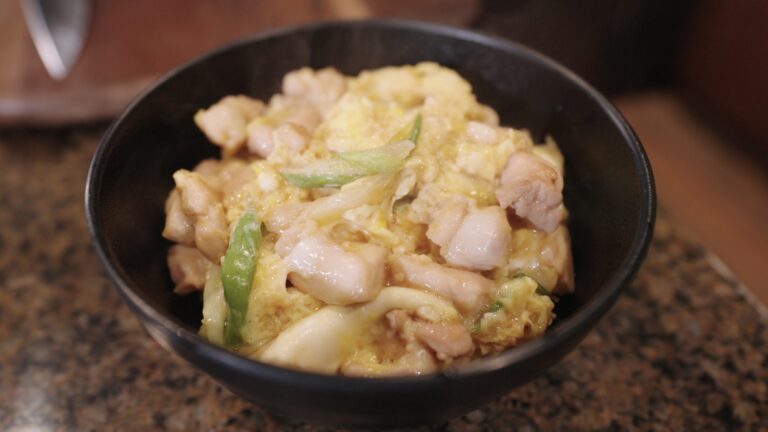The History
Chicken Nanban is a beloved dish hailing from Japan, renowned for its harmonious blend of textures and flavors. This culinary masterpiece boasts a history as rich as its taste, originating from the southern region of Miyazaki Prefecture. The name “Nanban” itself is derived from the Portuguese word “nanban,” meaning foreigner, a nod to the dish’s roots in the Portuguese traders who introduced frying techniques to Japan.
The Heart of Chicken Nanban
At the heart of this food lies succulent pieces of chicken, typically breast or thigh meat, which are first marinated to infuse them with flavor, then coated in a light batter and fried to golden perfection. What sets Chicken Nanban apart is its distinctive sauce—a luscious concoction crafted from vinegar, soy sauce, sugar, and sometimes a hint of mustard. This sauce strikes a delicate balance between sweet, sour, and savory notes, elevating the dish to culinary greatness.
The magic of this food lies in its contrast of textures: the crispiness of the fried chicken exterior gives way to tender, juicy meat, while the tangy sauce adds a burst of flavor with every bite. It’s a symphony of sensations that delights the palate and leaves a lasting impression.
Traditionally, Chicken Nanban is served with a side of shredded cabbage, whose fresh crunch provides a refreshing contrast to the richness of the dish. Some variations also include toppings like tartar sauce or a sprinkle of chopped scallions, adding depth and complexity to the flavor profile.
What makes Chicken Nanban truly special is its versatility. Whether enjoyed as a hearty main course alongside rice or as a delightful appetizer to share with friends, it never fails to captivate diners with its irresistible taste and alluring aroma.
In modern times, Chicken Nanban has transcended cultural boundaries to become a beloved dish enjoyed by people around the world. Its popularity continues to soar, thanks to its deliciousness and the ease with which it can be prepared at home. Whether you’re a seasoned chef or a novice in the kitchen, Chicken Nanban promises a culinary adventure that’s as rewarding as it is delicious.

Chicken Nanban (チキン南蛮)
Ingredients
Tartar Sauce
- 2 egg
- 1/4 red onion
- 5 tbsp mayo
- 1/4 tsp salt
- 1/4 tsp pepper
- 1/4 tsp parsley
- 1/2 tsp capers
Sweet & Sour Sauce
- 4 tbsp vinegar
- 4 tbsp sugar
- 3 tbsp soy sauce
Chicken Nanban
- 4 tbsp flour
- 1 egg
- 60 g Chicken Thigh
Instructions
Tartar Sauce
- Boil the eggs for approximately 14 minutes.

- Cool the eggs with water and ice.

- Finely chop the red onion.

- Finely chop the capers.
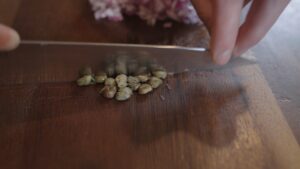
- Peel the cooled eggs and finely chop the them.
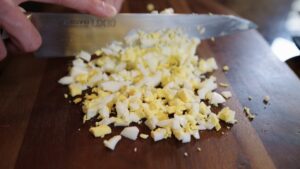
- Mix all ingredients, red onion, capers, mayo, eggs, salt, pepper, parsley very well.
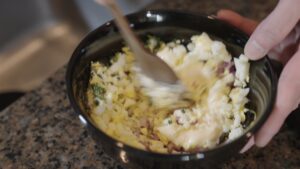
Sweet & Sour Sauce
- Place vinegar, soy sauce, sugar in the pot.

- Slowly bring to a boil.

Chicken Nanban
- Whisk the egg thoroughly.
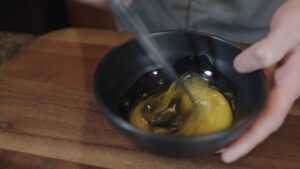
- Trim the chicken. After taking out bone and tendon, but not skin, cut the meat.

- Add salt & pepper.

- Coat the surface of the chicken with flour thoroughly.
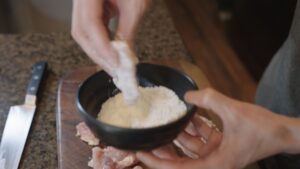
- Dip the chicken into the egg mixture and mix them very well.

- Heat oil until it reaches a temperature of 356°F (180°C)
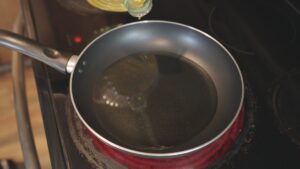
- Add the chicken – skin down. (Add slowly to prevent splattering) And continue to fry for 3 to 4 minutes.

- When the skin of the chicken turns golden brown, turn it over.

- Remove the meat from the heat when the skin turns crispy.

- Cover the meat and set aside to ensure it cooks thoroughly. (About 5 minutes)

- Dip the chicken into the sweet and sour sauce.

- Enjoy with prepared tartar sauce!



